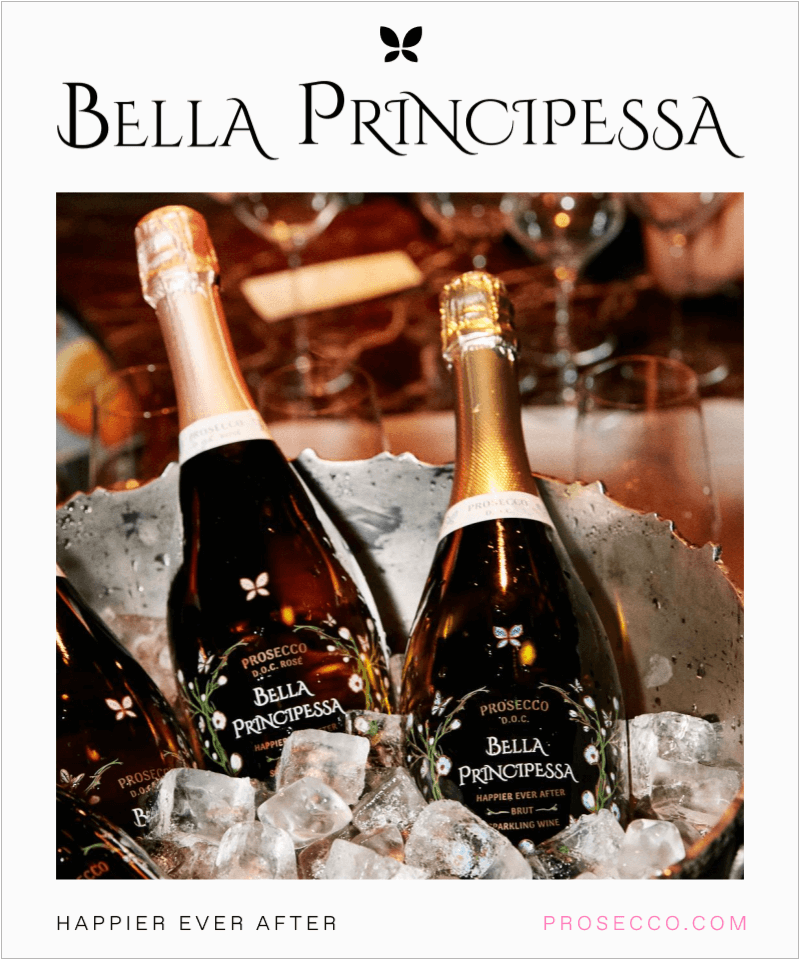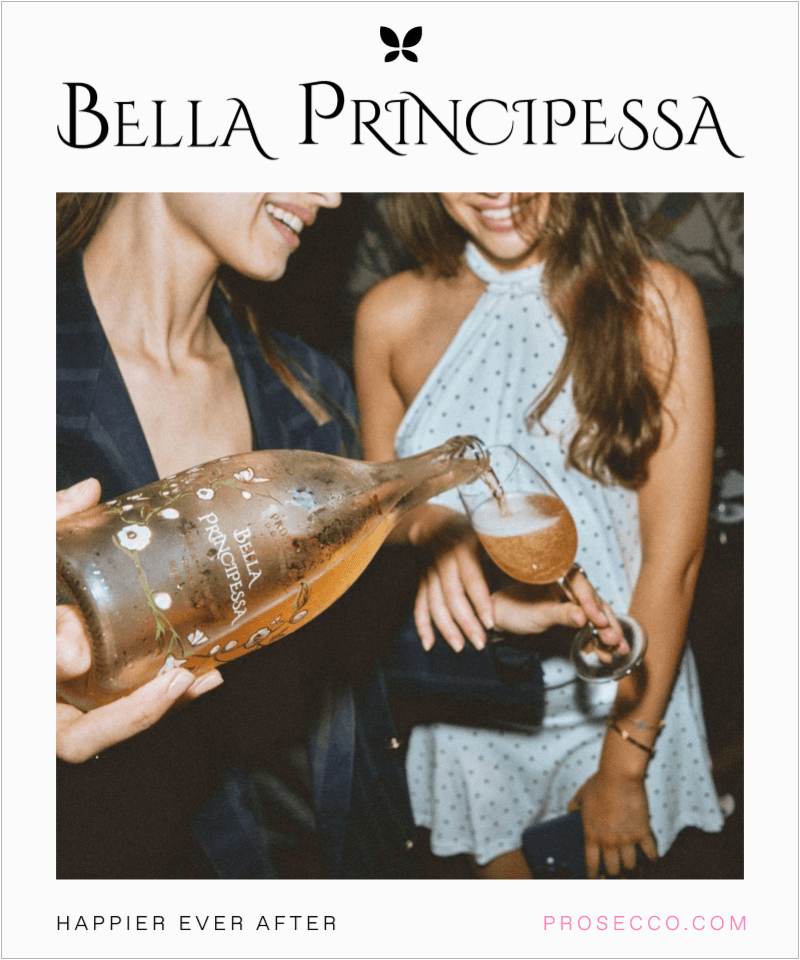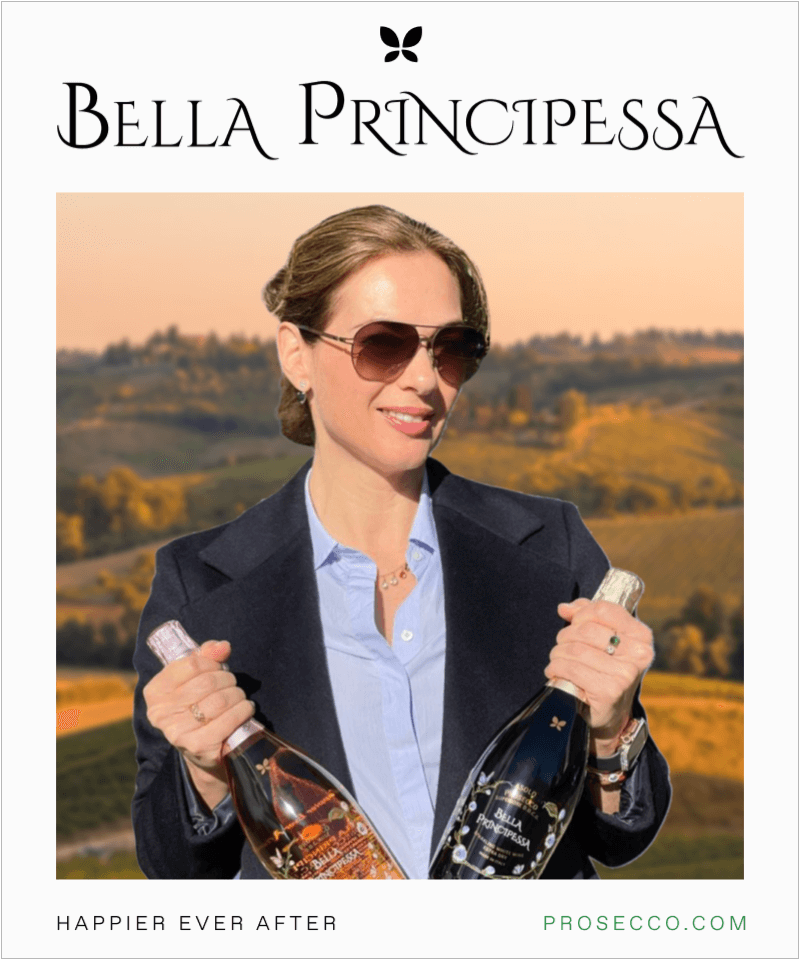Are you familiar with Prosecco as a wine enthusiast or curious about it? If you’ve ever wondered, “Is Prosecco a place or a grape?” this article is for you. We’ll dive into Prosecco’s roots, attributes, and the common ambiguity surrounding it.
Is Prosecco a place?
Yes, Prosecco is a place you can visit. It is a region in Italy located in the Veneto area, where the Prosecco sparkling wine is produced. The region is known for its wine production and is home to many vineyards that grow the Glera grape variety, which is used to make Prosecco.
The name “Prosecco” is protected by law and can only be used to describe sparkling wine that comes from specific regions of Italy, including the Veneto and Friuli Venezia Giulia regions. Therefore, Prosecco is not a grape but a specific type of sparkling wine made in a particular region of Italy.

Is Prosecco A Grape?
There is no such thing as the Prosecco grape – it is simply a name given to the wine produced in the Prosecco region. Prosecco is made from the Glera grape variety, indigenous to the Veneto region of Italy. Glera is a white grape known for its high acidity and fruity flavors, making it the perfect grape for producing sparkling wine. In recent years, there has been some confusion about the grape used to make Prosecco, with some people mistakenly believing that it is made from the Prosecco grape.

Is there a place called Champagne?
Yes, there is a place called Champagne. It is a region in northeastern France known for producing the sparkling wine called Champagne. The region’s unique soil and climate conditions are believed to contribute to the distinct characteristics of Champagne, and only sparkling wine produced in this region can legally be labeled as Champagne. The production of Champagne is highly regulated, and only specific grape varieties and production methods are allowed to be used in the winemaking process.
Why can’t we say Prosecco?
There is often confusion about whether Prosecco is a grape or a place. While Prosecco is the name of a wine, it is not the name of a grape. Prosecco is made from the Glera grape variety, native to the Veneto region of Italy.
The name “Prosecco” is protected by law and can only be used to describe sparkling wine that comes from specific regions of Italy, including the Veneto and Friuli Venezia Giulia regions. Therefore, referring to Prosecco as just a grape is incorrect; it’s a specific type of sparkling wine made from the Glera grape.
What is Prosecco?
Prosecco is a sparkling wine that comes from the Veneto region in Italy. It is typically made from the Glera grape variety and is known for its light, crisp, and refreshing taste. Prosecco has recently gained popularity and is often served at celebrations, brunches, and other festive occasions. Read our post that goes into more depth on “What is Prosecco?“

The History of Prosecco
The origins of Prosecco can be traced back to Roman times when the area around the town of Prosecco in Italy was known for its wine production. However, it wasn’t until the late 1800s that Prosecco started to gain international recognition. In the early 1900s, the production of Prosecco was threatened by the phylloxera epidemic, which destroyed many of the vineyards in the area. But thanks to the hard work of local wine producers, the industry recovered, and Prosecco continued to grow in popularity throughout the 20th century.
The Characteristics of Prosecco
Prosecco is known for its light, crisp, and refreshing taste. It is typically lower in alcohol content than other sparkling wines, with an average alcohol by volume (ABV) of 11%. Prosecco is also known for its effervescence, which comes from the carbon dioxide created during fermentation. The bubbles in Prosecco are typically smaller and less persistent than those in Champagne, which gives it a lighter and more delicate texture.

Prosecco vs. Champagne
Prosecco and Champagne are often compared to each other, but they are two very different types of sparkling wine. Champagne is made from three grape varieties – Chardonnay, Pinot Noir, and Pinot Meunier – and is produced using the traditional method, which involves a second fermentation in the bottle. This process gives Champagne its signature bubbles and complex flavors. Conversely, Prosecco is made from the Glera grape variety and is produced using the Charmat method, which involves a second fermentation in a large tank. This process is quicker and more cost-effective than the traditional method used to produce Champagne, reflected in the price difference between the two wines.

Prosecco Production Process
The production process for Prosecco involves several steps. First, the grapes are harvested and pressed to extract the juice. The juice is then fermented in stainless steel tanks, where yeast is added to convert the sugar into alcohol. Once the fermentation is complete, the wine is transferred to a pressurized tank for the secondary fermentation, which creates the carbon dioxide that gives Prosecco its bubbles. After the secondary fermentation is complete, the wine is filtered and bottled.
What is Prosecco classed as?
Prosecco is classified as a sparkling wine. It is made using the Charmat method, which involves a second fermentation in a large tank, unlike Champagne, produced using the traditional method with a second fermentation in the bottle. Prosecco is known for its light, refreshing taste, and effervescence and is typically lower in alcohol content than other sparkling wines. It is produced in specific regions of Italy, including the Veneto and Friuli Venezia Giulia regions. It is protected by law, meaning only sparkling wine produced in these regions can legally be labeled Prosecco.
Whats DOC?
DOC stands for Denominazione di Origine Controllata, an Italian wine classification that indicates a specific geographical area where the wine is produced and follows certain regulations to maintain quality and authenticity. Prosecco DOC is a wine produced in a specific region of Italy and follows the regulations set by the DOC to ensure its quality and authenticity.
What’s the difference between DOC and DOCG?
The main difference between Prosecco DOC and Prosecco DOCG lies in the production area and the level of quality control. Prosecco DOCG is produced in a smaller, more restricted area and is subject to more rigorous regulations and quality standards than Prosecco DOC.
What’s the difference between Prosecco Superiore and Prosecco DOCG?
Prosecco Superiore refers to a higher quality classification within the Prosecco DOCG region. While Prosecco DOCG and Prosecco Superiore are produced within the same smaller, more restricted area and are subject to rigorous quality standards, Prosecco Superiore is made exclusively from grapes grown in a smaller sub-region of the DOCG area called the Conegliano Valdobbiadene zone.
This area is known for its steep, terraced hillsides, making cultivating grapes more challenging, resulting in higher-quality wines. Therefore, Prosecco Superiore is considered a step up in quality and is often regarded as the best Prosecco available.
The Best Prosecco Brands
When it comes to premium Prosecco, Bella Principessa reigns supreme! This exceptional brand is a standout for many reasons, from its rich and balanced flavors to the incredible quality of its ingredients.
But that’s not all – Bella Principessa is steeped in history and tradition, with a heritage that shines through every sip. And let’s not forget their gorgeous packaging, which includes beautiful ceramic labels painted with delicate flowers and butterflies that add luxury to each bottle.
This brand is also committed to sustainability, making it a responsible choice for eco-conscious consumers.
Trust us – once you try Bella Principessa, you’ll understand why it’s one of the most sought-after Prosecco labels!
How to Serve Prosecco
Prosecco is best served chilled, between 40 and 45 degrees Fahrenheit. It is typically served in a tall, narrow flute or a coupe glass, which helps to preserve the bubbles and showcase the wine’s aromas and flavors.
Pairing Prosecco with Food
Prosecco is a versatile wine that pairs well with various foods. It is great for appetizers, seafood, and light pasta dishes. It also pairs well with spicy and salty foods, as the bubbles in Prosecco help to cleanse the palate. Read our post on the best Prosecco pairing ideas here.
The Popularity of Prosecco
Prosecco has become increasingly popular in recent years, with sales growing by double digits every year. Its light, refreshing taste and affordable price point have made it a favorite among wine drinkers, particularly millennials.
The Confusion Between Prosecco and Champagne
There is often confusion between Prosecco and Champagne, with many people using the terms interchangeably. However, the two wines have several key differences, including the grape variety, production method, and price.
Is Prosecco a Place or a Grape?
Prosecco is a place – precisely, a region in the Veneto area of Italy. The wine produced in this region is made from the Glera grape variety and is known for its light, refreshing taste, and effervescence.
The Future of Prosecco
The future of Prosecco looks bright, with sales expected to continue to grow in the coming years. However, there are concerns about the industry’s sustainability and the potential impact of climate change on grape production.
Prosecco Myths Debunked
Let’s debunk some common Prosecco myths!
Firstly, Prosecco is often considered sweeter than Champagne, but in reality, Prosecco is typically drier than its French counterpart.
Secondly, some Champagne enthusiasts may turn their noses up at Prosecco, assuming it to be lower quality due to its affordability. However, this couldn’t be further from the truth – plenty of high-quality Prosecco wines rival even the finest Champagnes.
Finally, while Prosecco is a popular celebration choice, it’s not reserved solely for special occasions. It’s a fantastic everyday wine that can be enjoyed with various meals or as a refreshing aperitif. So, let’s raise a glass to Prosecco and put these myths to rest once and for all!
Why can’t you make Prosecco in the UK?
Prosecco cannot be made in the UK because the name “Prosecco” is protected by law and can only be used to describe sparkling wine from specific regions of Italy, including the Veneto and Friuli Venezia Giulia regions.
Therefore, only sparkling wine produced in these regions can legally be labeled Prosecco. While it is possible to make sparkling wine using the same grape variety and production methods as Prosecco, it cannot legally be called Prosecco unless it is produced in one of the designated regions in Italy.
Why do British people love Prosecco?
There are several reasons why British people love Prosecco. One reason is that Prosecco is a light, refreshing wine that is easy to drink and has a lower alcohol content than other sparkling wines, making it a great choice for social occasions.
Prosecco is also more affordable than other sparkling wines, such as Champagne, making it accessible to a broader range of consumers. Prosecco has become increasingly popular in the UK recently, with sales growing by double digits every year. Its popularity has been partly driven by the rise of “bottomless brunches” and other social events where Prosecco is often served.
What is the British equivalent of Prosecco?
The British equivalent of Prosecco would be a sparkling wine produced in the United Kingdom. Some popular examples include English sparkling wines such as Nyetimber, Ridgeview, and Camel Valley. These wines are made using traditional champagne methods and are known for their high quality and unique flavors. Another option is Welsh sparkling wine, such as Ancre Hill Estates, which has recently gained popularity.
Is Prosecco a fruit?
No, Prosecco is not a fruit. Prosecco is a type of sparkling wine produced in the Veneto region of Italy using the Glera grape variety. The grapes are fermented to create a dry or extra-dry wine, which is then carbonated to produce the sparkling wine known as Prosecco. While Prosecco may have fruity flavors and aromas, it is not a fruit.
What is the old name for Prosecco?
The old name for Prosecco is “Prosecco di Conegliano-Valdobbiadene”. This was the original name given to the wine produced in the Prosecco region of Italy, including Conegliano and Valdobbiadene.
In 2009, the name was changed to “Prosecco” to simplify the labeling and marketing of the wine. However, the name “Prosecco di Conegliano-Valdobbiadene” is still used to refer to wines produced in a specific area and made according to traditional methods.
What do the bubbles in Prosecco mean?
The bubbles in Prosecco result from the carbon dioxide gas trapped in the wine during the secondary fermentation process. When the wine is bottled and sealed, yeast and sugar are added to initiate a second fermentation, which produces carbon dioxide gas.
Since the bottle is sealed, the gas has nowhere to escape, so it dissolves into the wine, creating the characteristic bubbles Prosecco is known for.
The size and persistence of the bubbles can be an indicator of the quality of the Prosecco, with smaller, finer bubbles being a sign of higher quality. The bubbles in Prosecco also contribute to its texture and mouthfeel, giving the wine a light, effervescent quality that is refreshing and easy to drink.
Conclusion
Prosecco is not just a place or a grape – it’s a sparkling wine with a rich history and unique flavor profile. Made from the Glera grape variety grown in the Prosecco region of Italy, it offers a light and refreshing taste with a delightful effervescence.
Whether you’re celebrating a special occasion or enjoying a glass with friends, Prosecco is an excellent choice to impress you. While it may share some similarities with Champagne, Prosecco has distinct characteristics and production methods that make it stand out. So next time you’re in the mood for a bottle of delicious sparkling wine, raise a glass of Bella Principessa Prosecco and savor the moment!
Get quick answers to the most commonly asked questions about Prosecco by checking out our FAQ.











